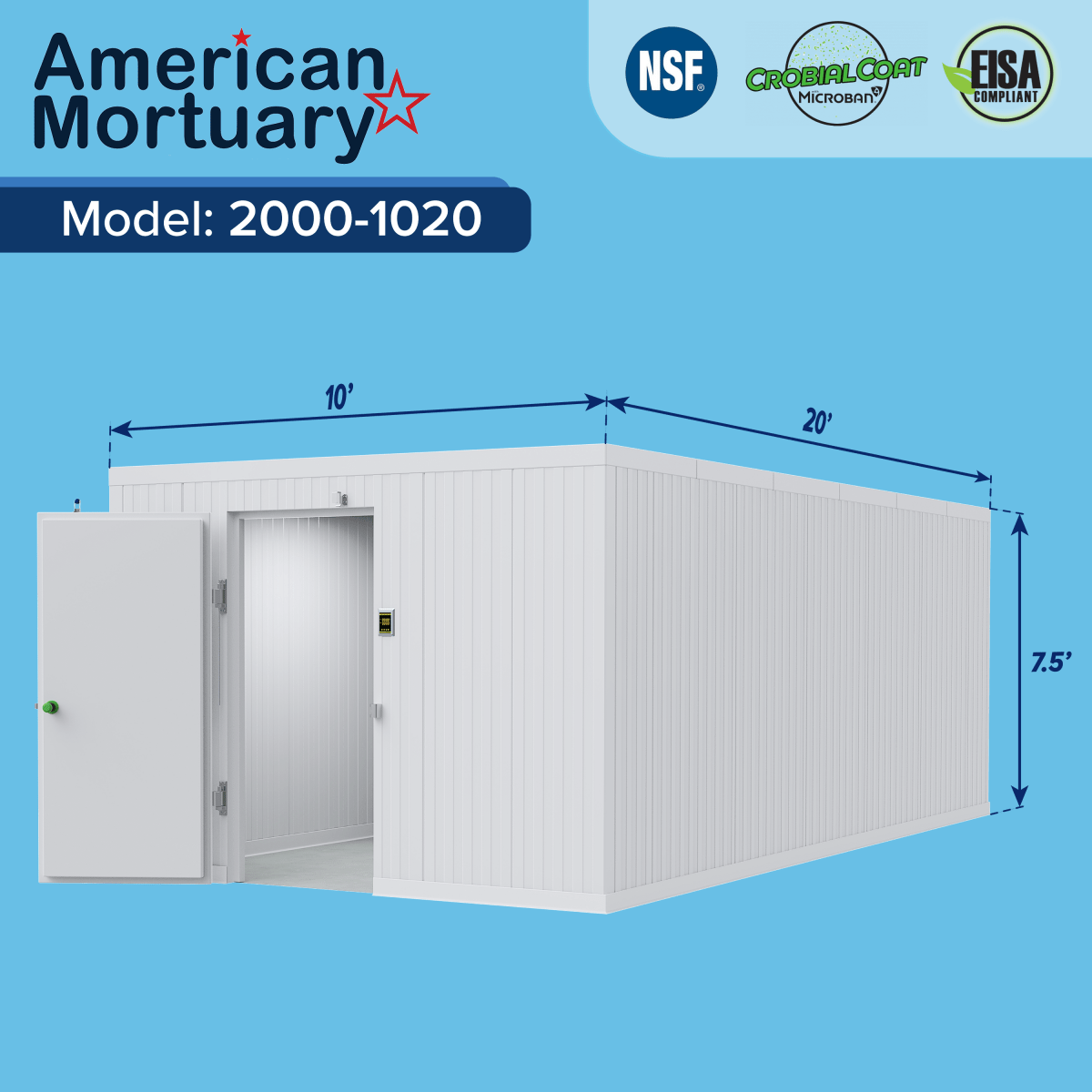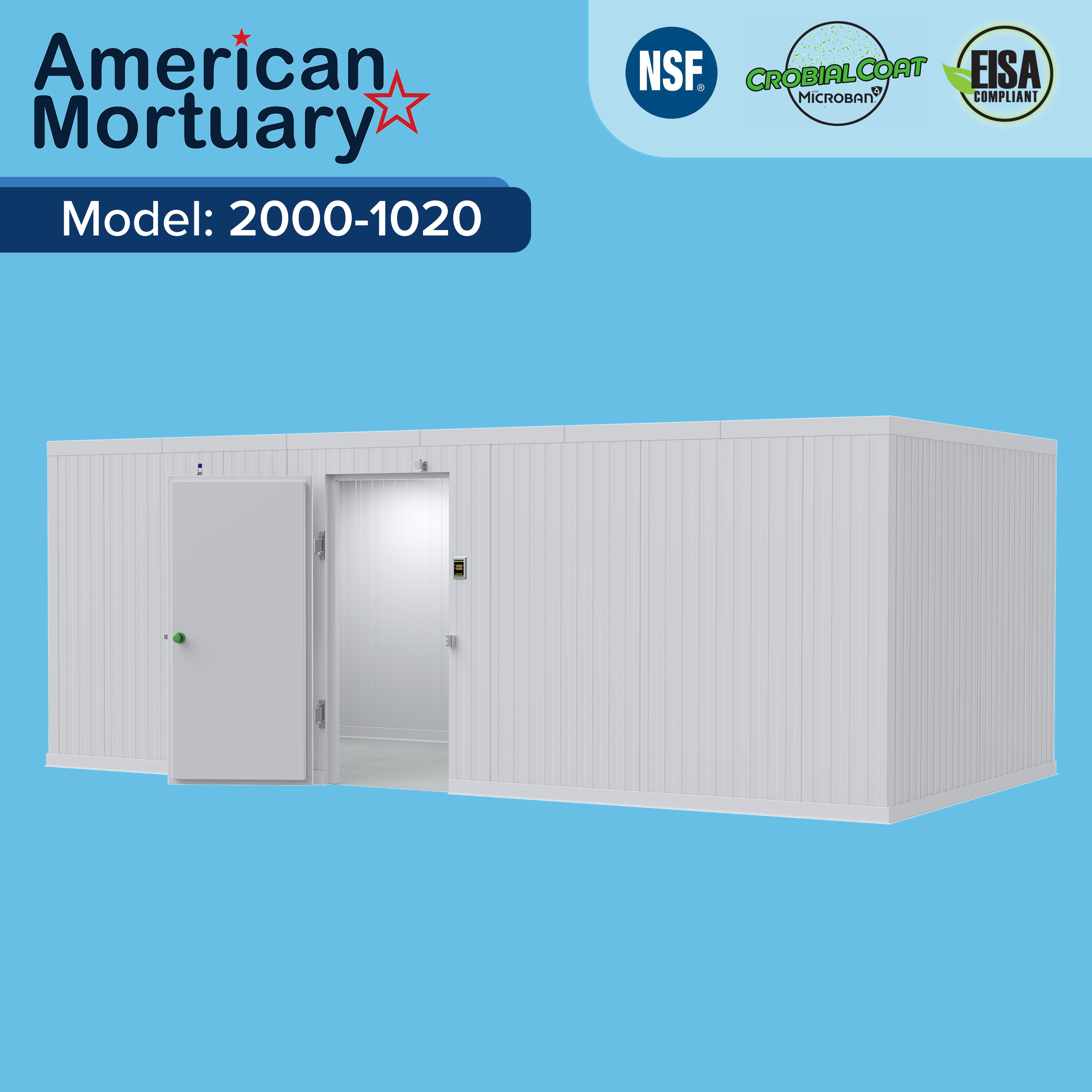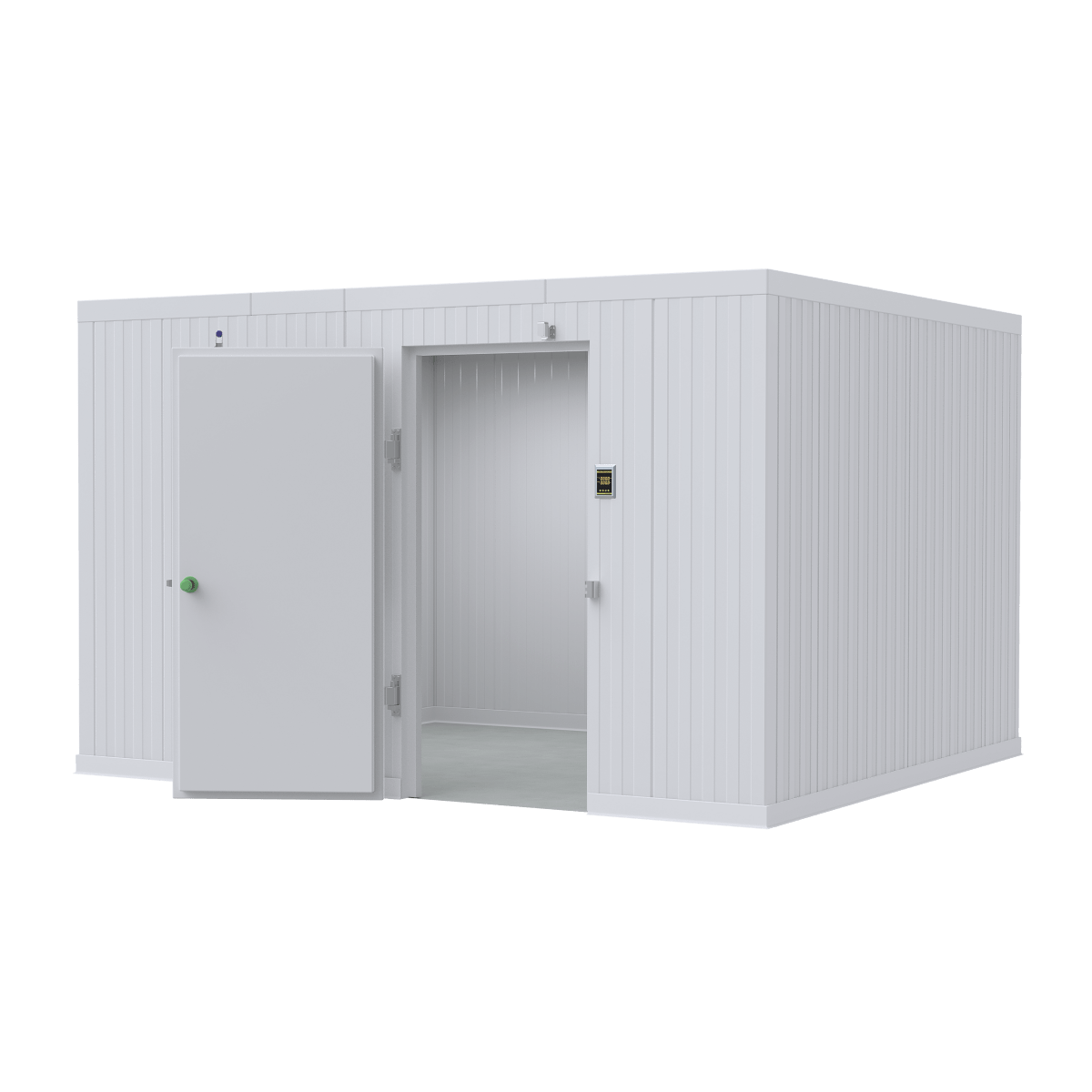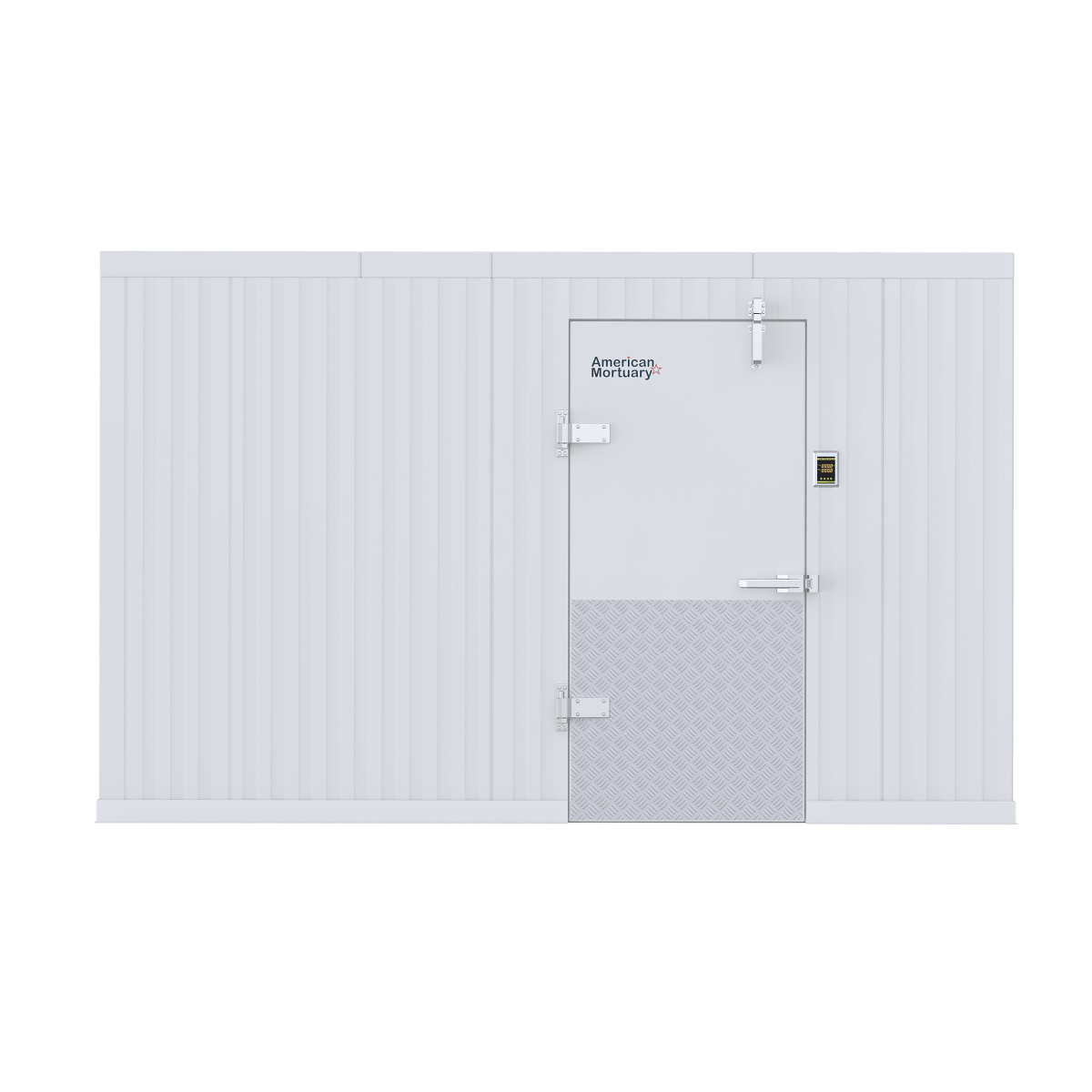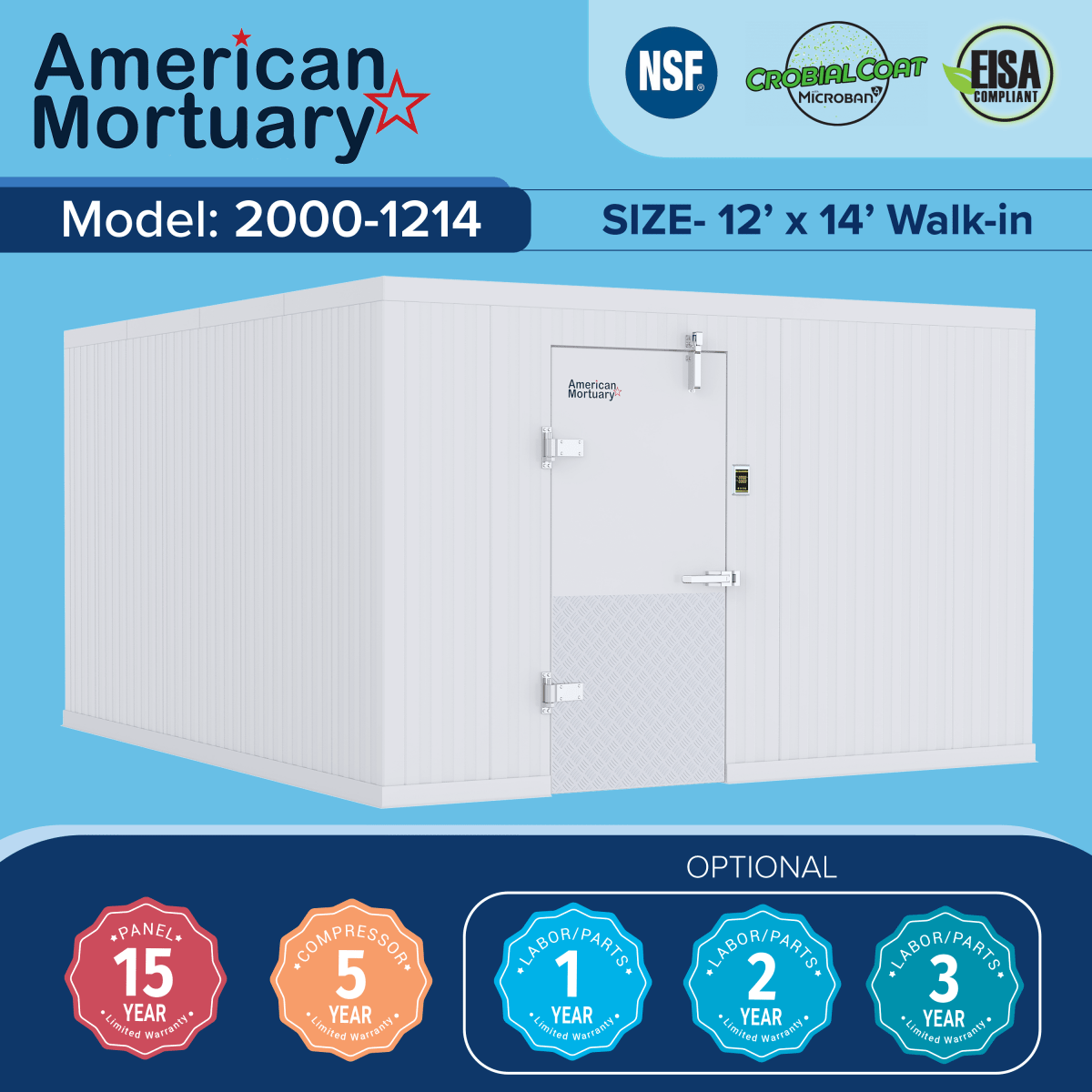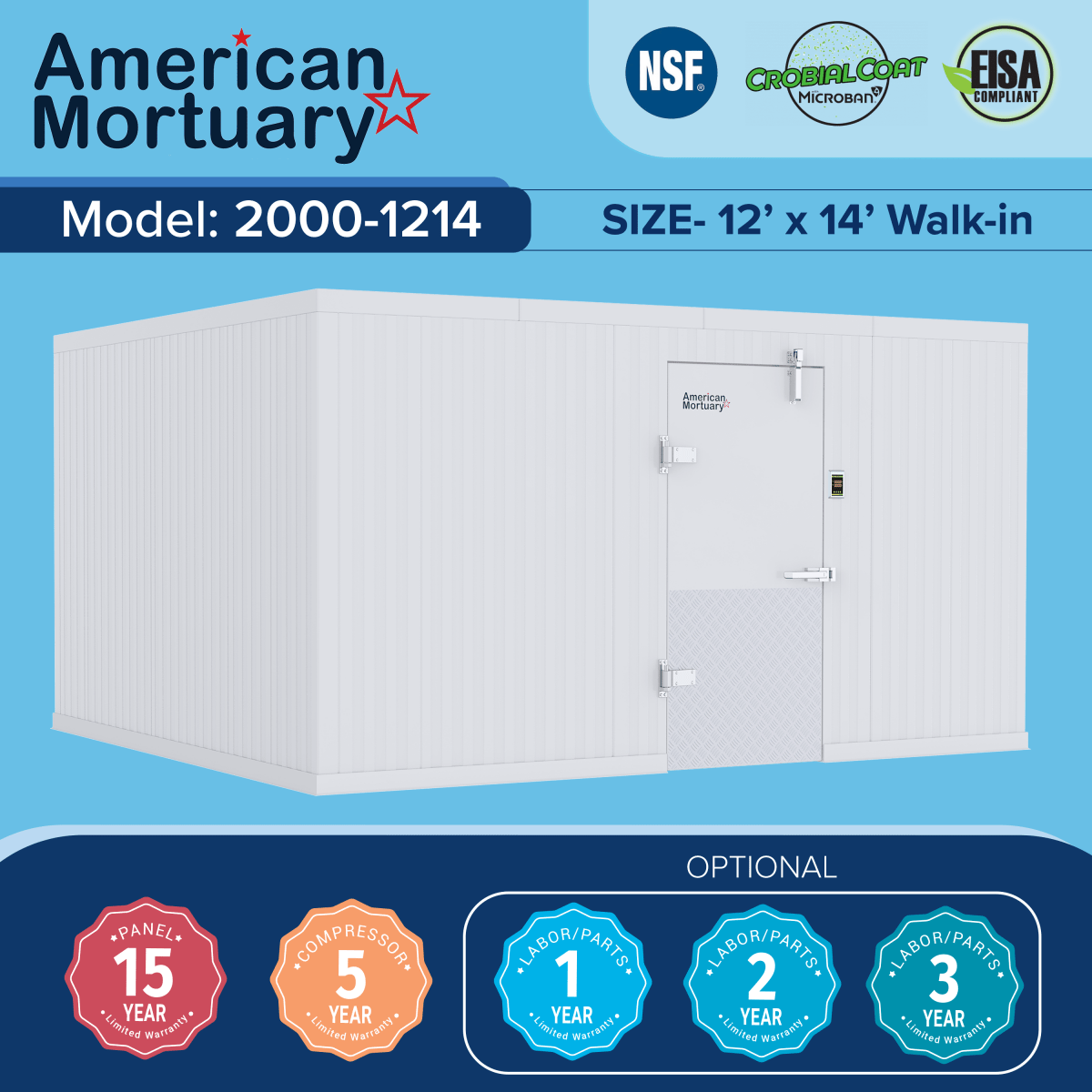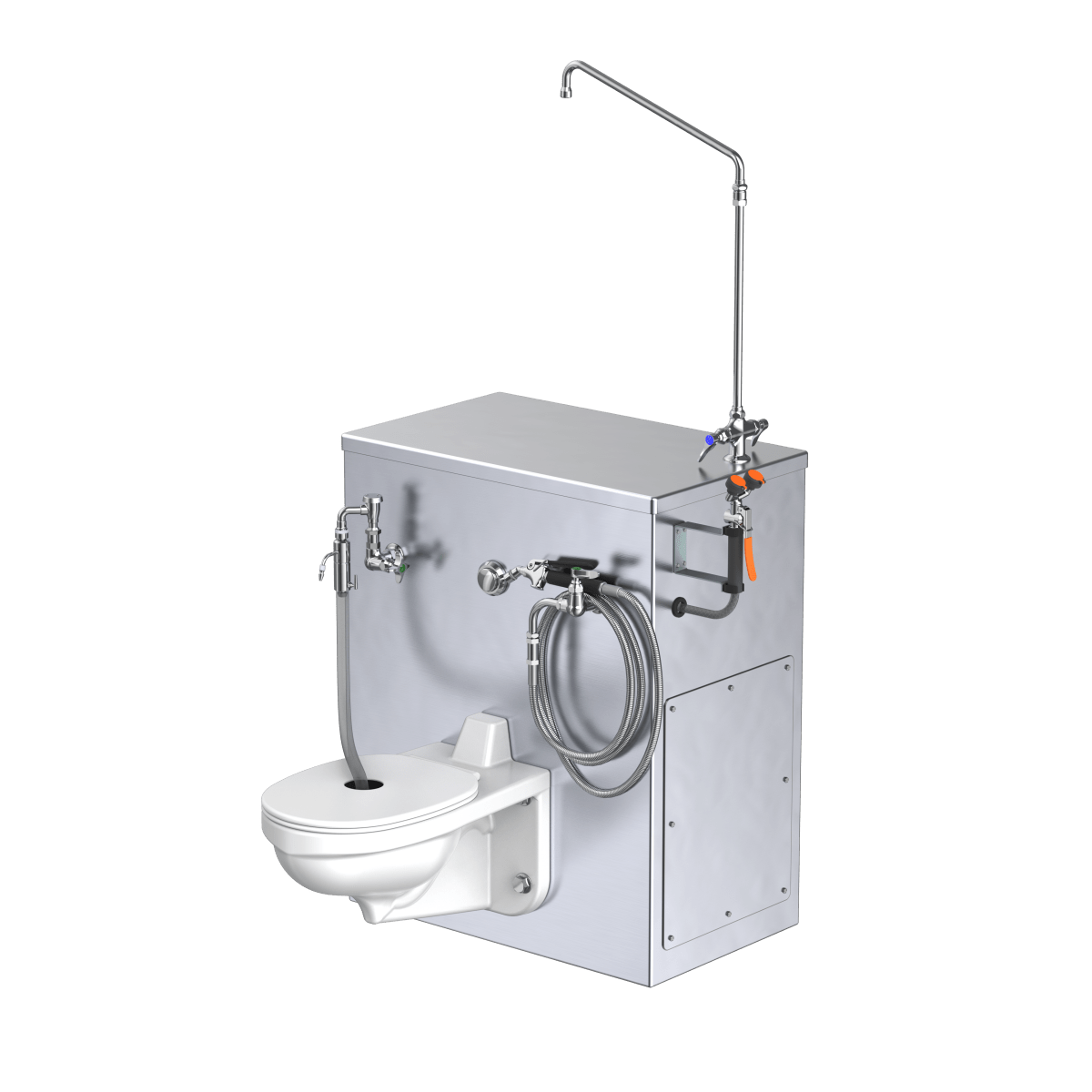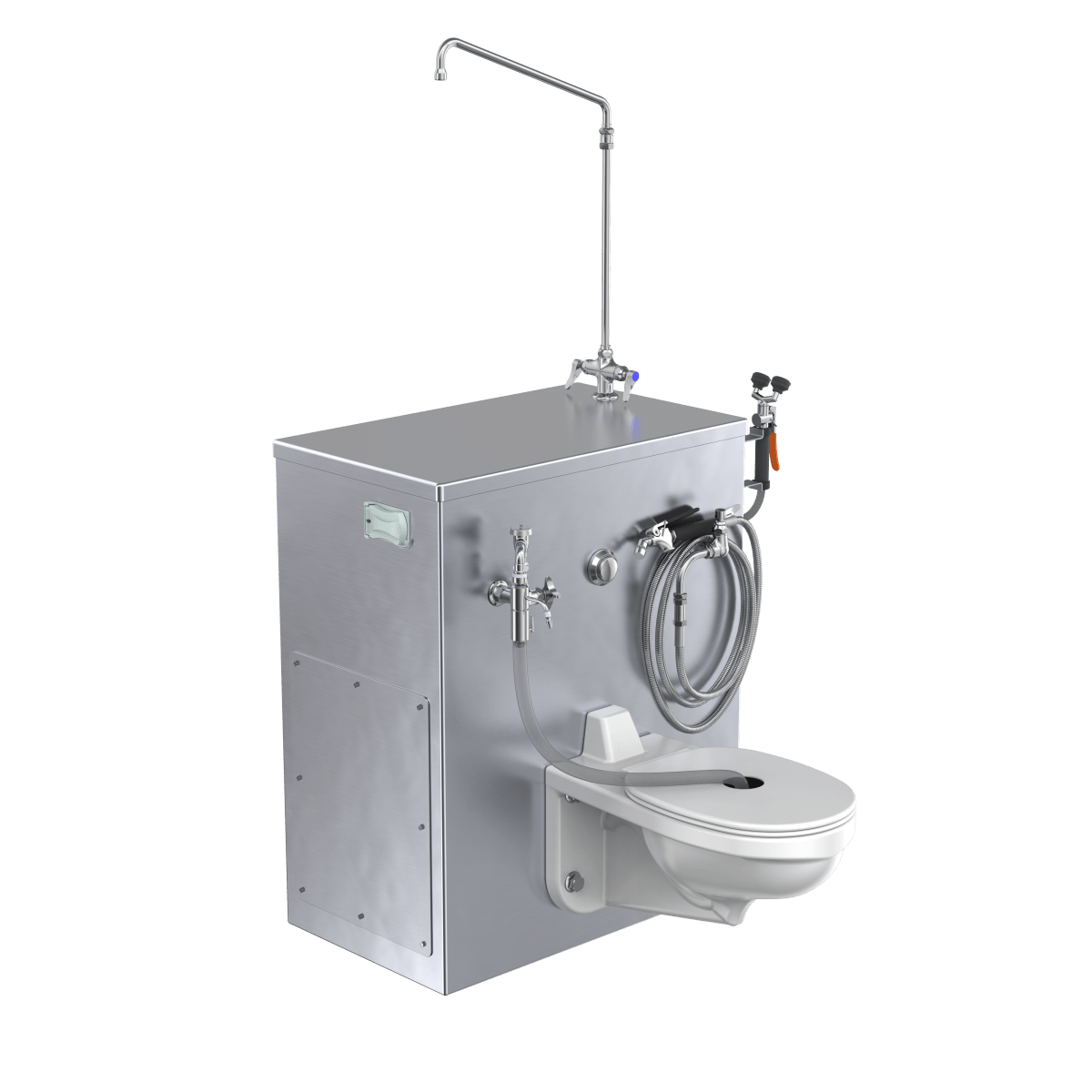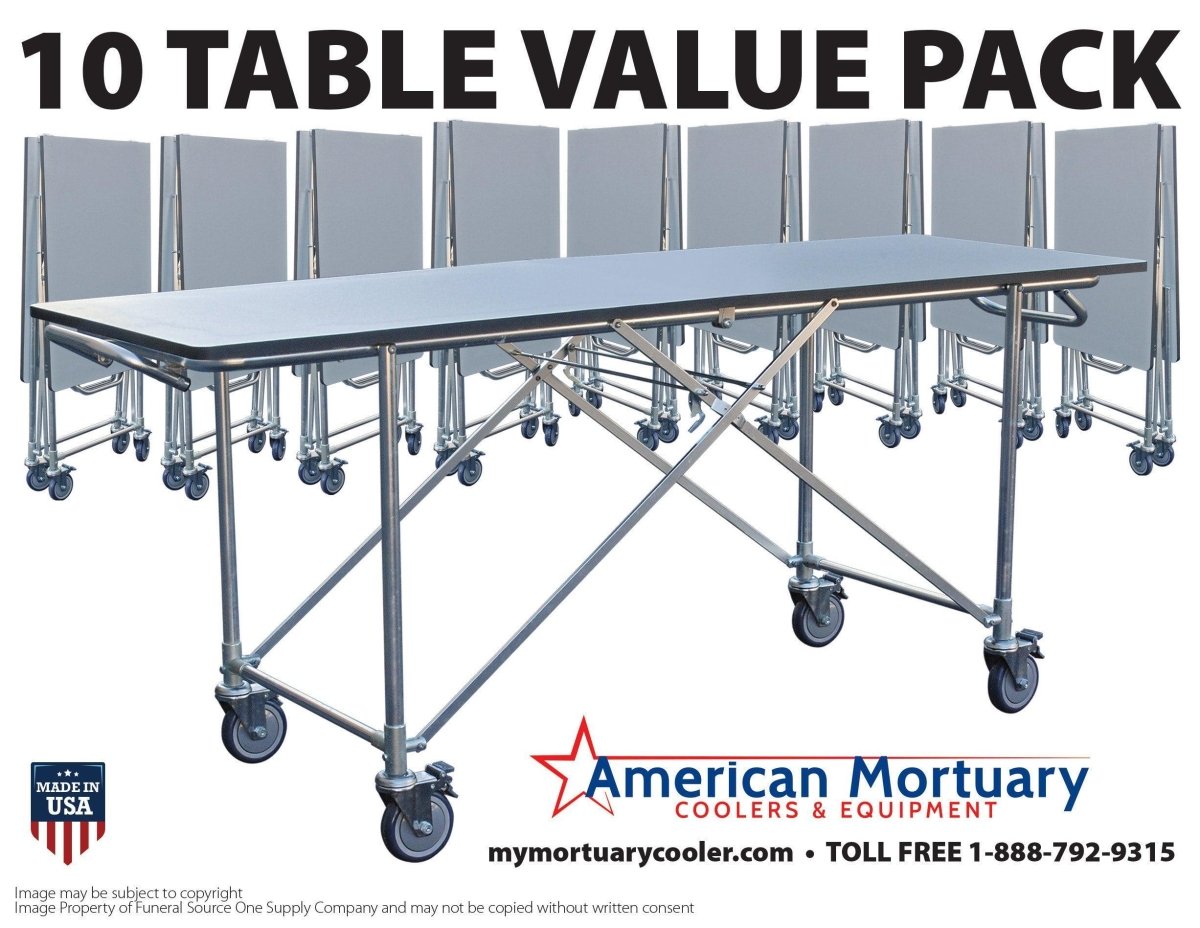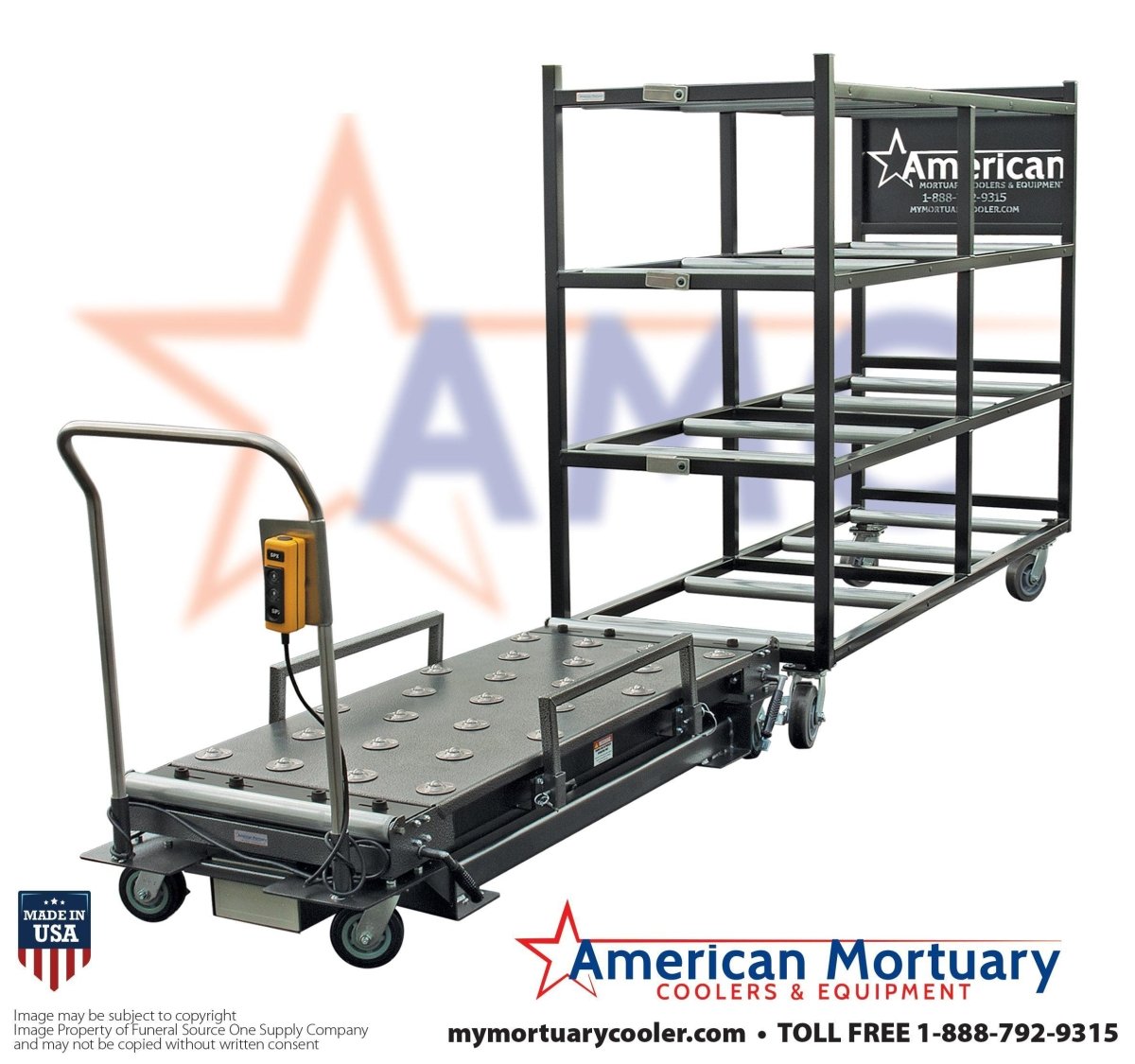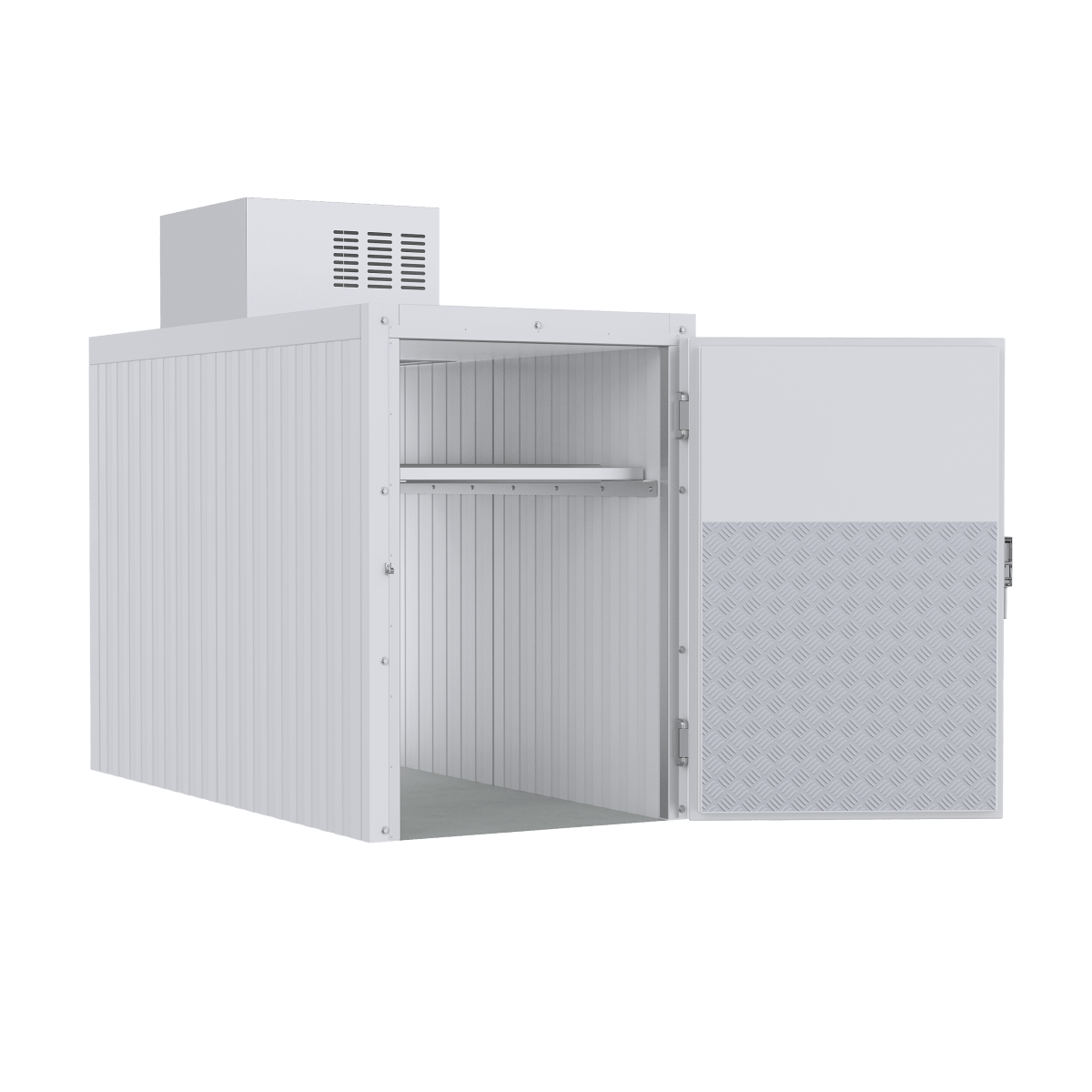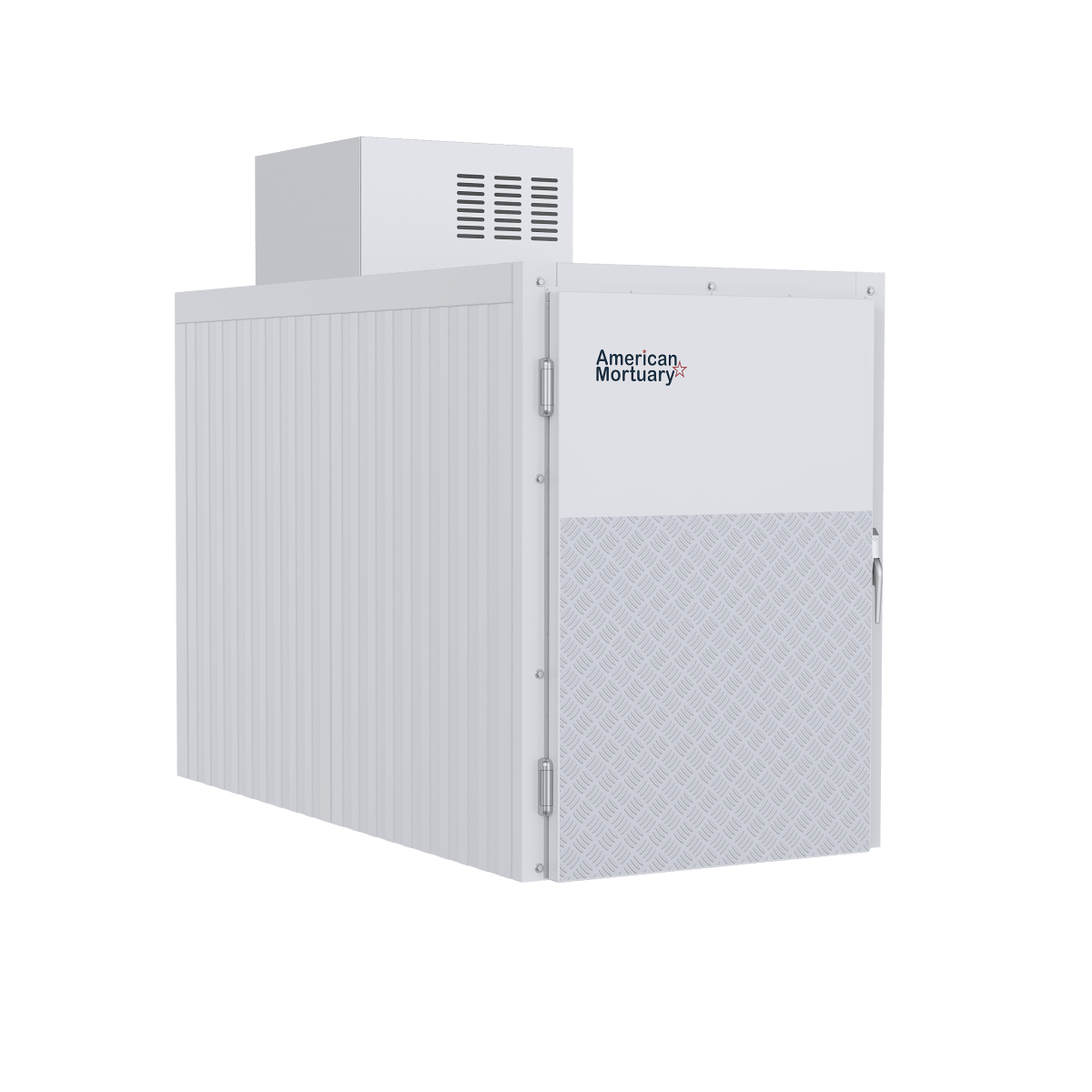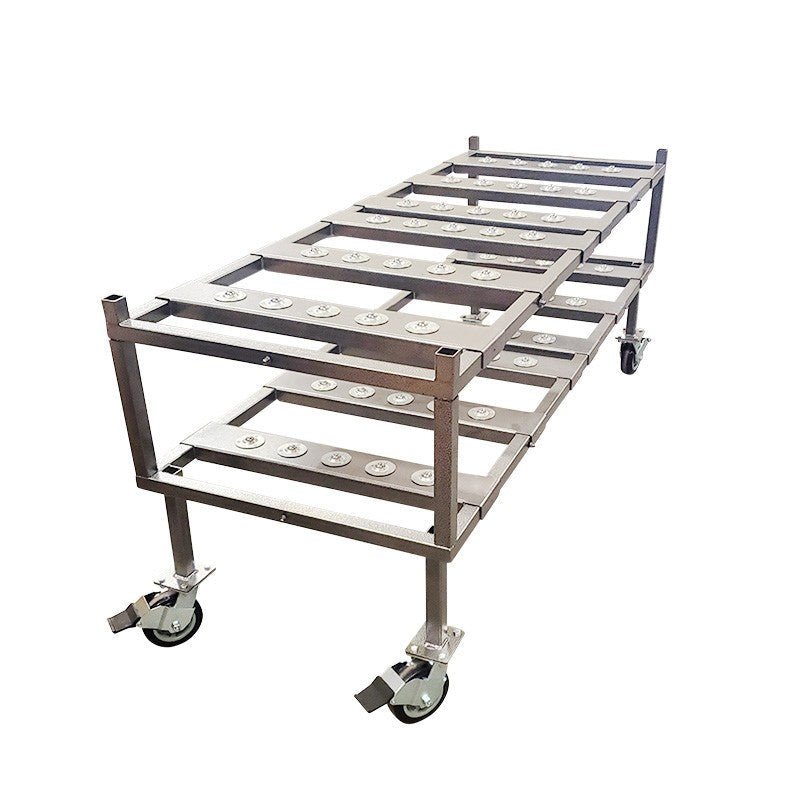Understanding Gerni Beds for Patient Transport
A gerni bed is a specialized wheeled stretcher designed for transporting patients within healthcare facilities or during emergency medical services. While "gerni" is likely a misspelling or regional term, these medical transport devices are more commonly known as gurney beds or simply gurneys.
Quick Reference Guide: What is a Gerni/Gurney Bed?
| Feature | Description |
|---|---|
| Purpose | Patient transport within hospitals, clinics, and emergency services |
| Design | Wheeled frame with cushioned surface and adjustable features |
| Weight Capacity | Typically 330-1000 lbs depending on model |
| Key Components | Side rails, adjustable height, braking system, IV pole attachments |
| Types | Manual, hydraulic, electric, ambulance, mortuary |
Gurney beds serve as essential equipment in healthcare settings, providing a safe and efficient means of moving patients who cannot walk or should remain lying down. They feature a sturdy frame supporting a padded surface, with most modern models offering adjustable height and backrest positions.
The primary advantage of a gurney bed is its mobility. Unlike fixed hospital beds, gurneys can be easily wheeled through hallways, into elevators, and loaded into ambulances. This makes them indispensable for emergency departments, surgical facilities, and any healthcare setting where patients need frequent transportation.
Modern gurney beds incorporate numerous safety features like locking side rails to prevent falls, secure brake systems, and various positioning options to accommodate different medical needs. Many advanced models include hydraulic or electric lift mechanisms, making height adjustments effortless for caregivers and reducing workplace injuries.
I'm Mortuary Cooler, a national supplier of mortuary equipment with experience in providing high-quality transport solutions including gerni beds for funeral homes and healthcare facilities across the United States. My expertise helps facilities select the right transport equipment that balances durability, functionality, and budget considerations.
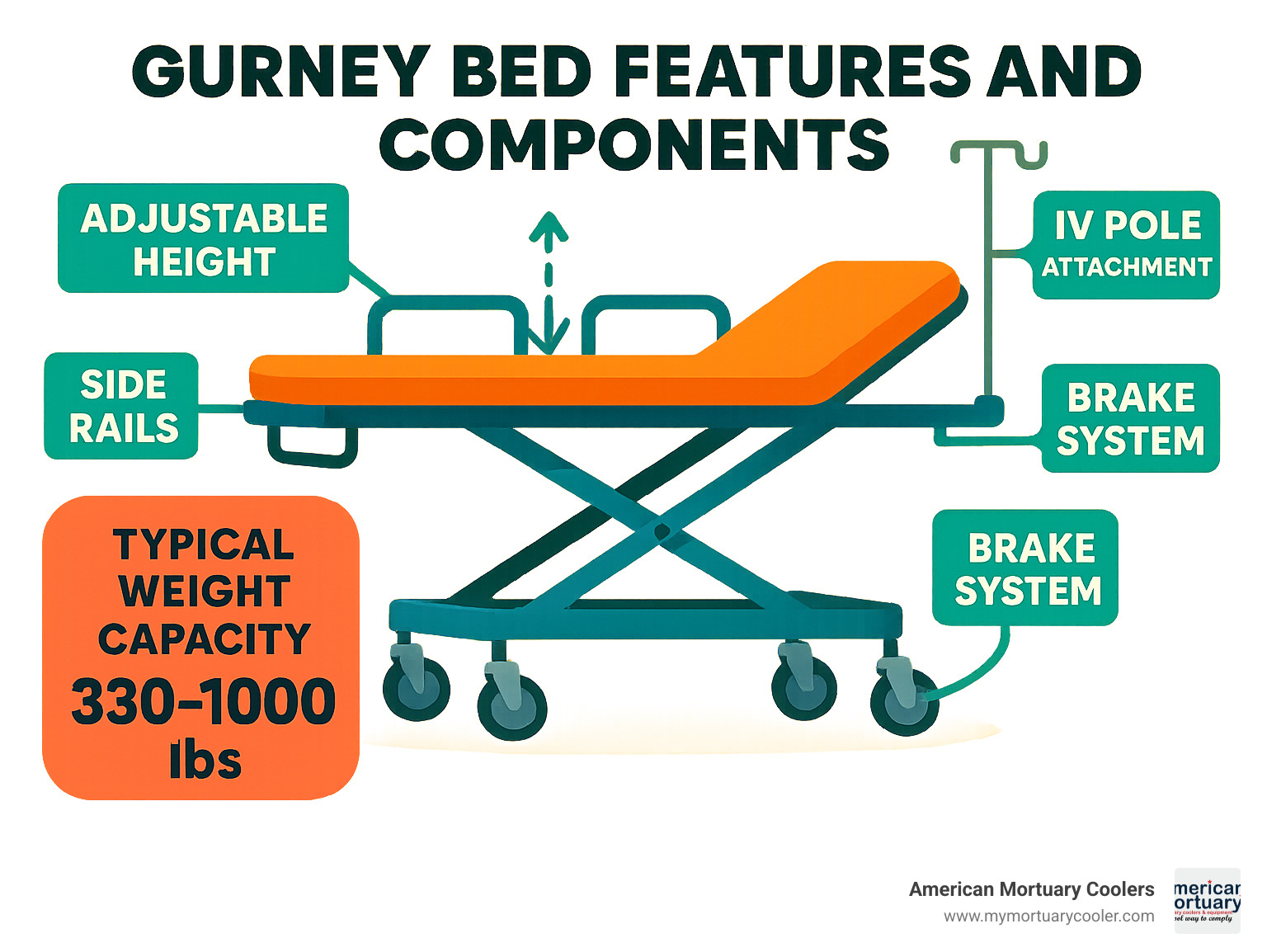
Key gerni bed vocabulary:
What Is a Gerni Bed and Why It Matters
When it comes to patient care and mobility, the humble gerni bed plays a crucial but often overlooked role in healthcare settings. Though "gerni" is a colloquial term, these specialized transport devices (more accurately called gurney beds) are the unsung heroes of hospitals and emergency services worldwide.
A gerni bed is essentially a mobile platform featuring a wheeled frame supporting a cushioned deck or mattress. Think of it as a hospital room on wheels – designed to move with patients rather than forcing patients to move themselves. These beds aren't just convenient; they're often lifesaving.
The importance of a reliable gerni bed touches every aspect of patient care. They allow medical staff to transport patients safely between departments without disrupting ongoing treatments. During emergencies, these beds become command centers where vital care continues even while in motion. For patients, a comfortable gerni bed provides dignity and security during what might otherwise be a stressful journey through hospital corridors.
"I've seen how the right gurney can transform patient experiences," shares a veteran hospital administrator. "Beyond just moving people from point A to point B, a quality gerni bed becomes an extension of our care philosophy – prioritizing both safety and comfort."
Modern gerni beds feature impressive engineering, with height-adjustment mechanisms that align perfectly with hospital beds, operating tables, and imaging equipment. This means smoother transfers with less lifting for staff and less jostling for patients. Weight capacities have evolved too, with standard models typically supporting 330 pounds and specialized bariatric versions handling upwards of 1,000 pounds to accommodate patients of all sizes with dignity.
Key Differences Between a "Gerni Bed," Stretcher, and Cot
Though often confused in everyday conversation, these three transport devices serve distinct purposes in healthcare settings:
| Feature | Gurney ("Gerni Bed") | Stretcher | Cot |
|---|---|---|---|
| Primary Purpose | Intra-facility patient transport | Emergency field transport | Temporary sleeping or resting |
| Height | Adjustable, typically 14-32 inches | Fixed or minimally adjustable | Low, usually 6-18 inches |
| Wheels | 4+ swivel casters, often with brakes | 2-4 wheels, sometimes removable | Usually none or small transport wheels |
| Folding Ability | Limited - primarily height adjustment | Highly foldable for storage | Completely collapsible |
| Features | Side rails, IV poles, adjustable backrest | Lightweight, portable, securing straps | Simple frame, basic mattress |
| Max Load | 350-1000+ lbs | 250-650 lbs | 250-450 lbs |
| Typical Use | Hospital corridors, procedure rooms | Ambulance, disaster response | Military, camping, temporary care |
A seasoned EMT once explained it perfectly: "In the field, we need stretchers that we can carry over uneven ground and quickly load into ambulances. But once we reach the hospital, patients benefit from transferring to gerni beds that offer more stability, positioning options, and comfort for their journey inside the facility."
When to Choose a Gerni Bed Over a Standard Hospital Bed
There are specific moments when a gerni bed becomes the clear choice over a traditional hospital bed. Emergency situations often top this list, where the ability to quickly transport a patient throughout a facility can make a critical difference in outcomes.
Space-constrained environments also benefit tremendously from these mobile beds. Many older healthcare facilities weren't designed with today's medical equipment in mind, making the narrower profile of a gerni bed essential for navigating tight doorways and cramped elevators.
For patients requiring multiple procedures in different departments, remaining on a single gerni bed can reduce the risk of transfer injuries while improving comfort. This is particularly valuable for individuals with pain issues or fragile medical conditions.
Emergency departments have acceptd these versatile beds to improve patient flow. As one ED director notes, "With adjustable gerni beds, we can quickly reconfigure our space during surge events, sometimes increasing our capacity by 30% compared to fixed beds."
The ambulance-to-hospital transition becomes remarkably smoother with specialized gurneys designed to roll directly from emergency vehicles into the facility. This seamless handoff reduces risks during what's often a vulnerable moment in patient care.
Finally, for brief procedures or examinations, a gerni bed provides the perfect balance of support and flexibility without tying up a dedicated room with a fixed bed.
A thoughtfully selected gerni bed isn't just a purchase—it's an investment in patient dignity, staff wellbeing, and operational efficiency. Whether in a busy urban hospital or a rural care center, these specialized beds continue to evolve alongside healthcare needs, proving their worth with every patient journey.
Core Components and Advanced Features to Look For
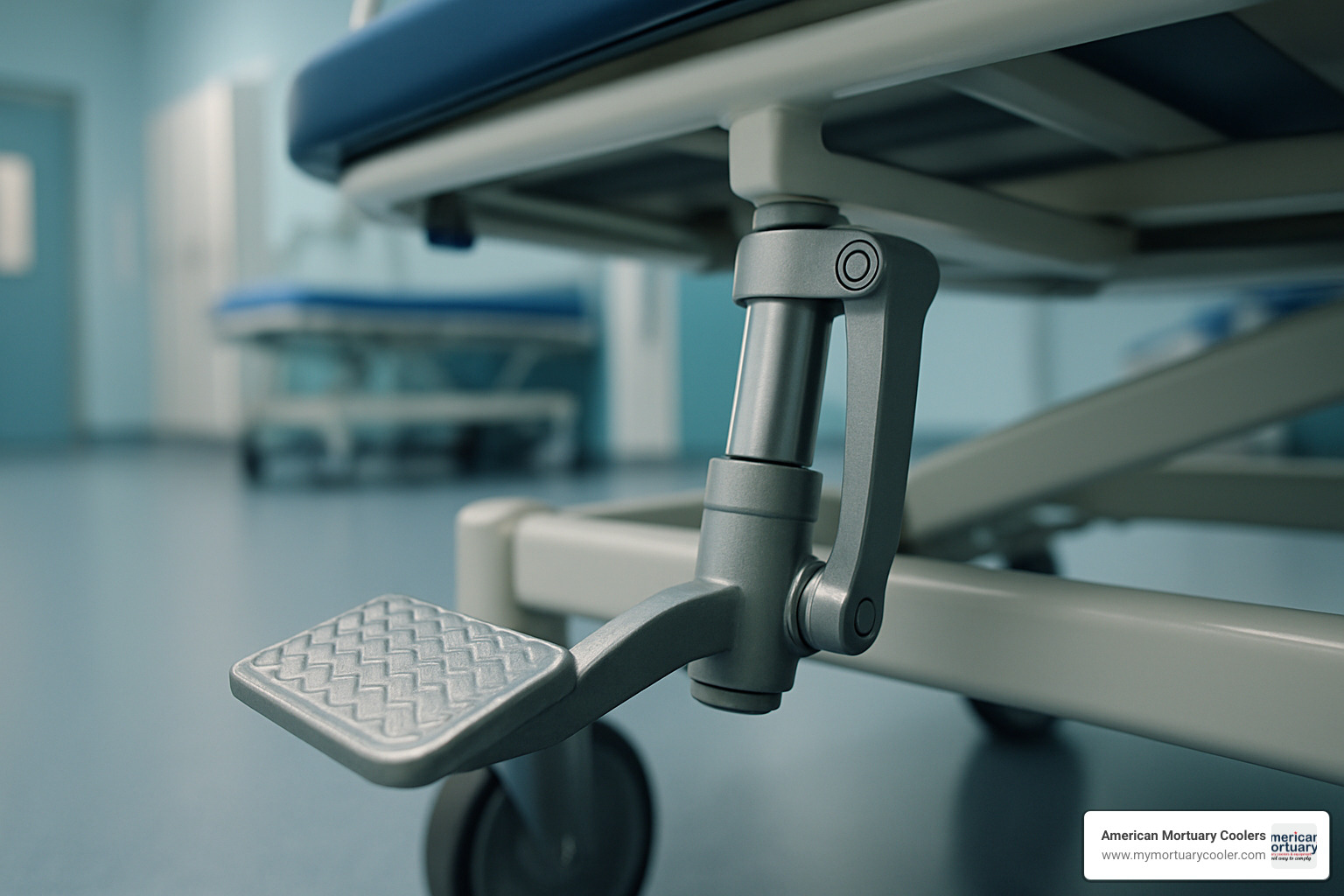
Shopping for a gerni bed can feel overwhelming with all the options available today. Let's break down what really matters when you're evaluating these essential patient transport devices.
Think of the frame as the backbone of any quality gerni bed. The best ones feature high-strength aluminum alloy construction that strikes that perfect balance between durability and manageable weight. Look for models with steel reinforcements at stress points – these small details make a huge difference in longevity. A good powder-coated finish isn't just about looks; it prevents corrosion and makes cleaning much easier after those inevitable spills.
"I've seen poorly constructed gurneys fall apart within months," shares Mark, a hospital maintenance supervisor I spoke with recently. "But our premium models with welded joints instead of bolted connections? They're still going strong after five years of daily use."
The way your gerni bed moves matters tremendously to your staff. Larger swivel casters (5 inches or more) glide more smoothly over thresholds and elevator gaps. The best mobility systems include both directional locking for those long hallway journeys and total locking for complete stability during patient transfers. Your floors will thank you for choosing non-marking materials, and sealed bearings prevent debris from jamming up the works.
Patient comfort comes down to the support surface. Modern gerni beds feature pressure-redistributing foam that prevents those painful pressure points during long waits. The covering should be completely waterproof with sealed seams – trust me, this feature pays for itself the first time bodily fluids are involved. Many facilities now prioritize antimicrobial treatments to reduce infection risks, especially important in today's healthcare environment.
The adjustment systems on your gerni bed directly impact staff satisfaction and safety. Hydraulic pumps allow hands-free height adjustments via foot pedals, while pneumatic assistance makes backrest positioning nearly effortless. Electric models with battery power eliminate physical strain entirely, though I always recommend ensuring there's a manual backup for those inevitable power failure moments.
Safety features aren't optional extras – they're essential protections. Four-sided rails with intuitive locking mechanisms prevent falls while still allowing quick access when needed. Those rubber corner bumpers that seem so simple? They'll save your walls and equipment during tight-space navigation. Clear weight capacity labeling and visible brake indicators prevent dangerous mistakes during hectic moments.
A clinical engineering director at a busy urban hospital told me, "When we upgraded our emergency department gurneys, we specifically looked for models with intuitive controls and visible brake indicators. Those two features alone reduced staff injuries by nearly 30% in the first year."
The thoughtful storage and accessories on today's gerni beds transform them from simple transport devices into mobile care stations. Look for integrated storage compartments, multiple IV pole socket positions, secure oxygen tank holders, and convenient document pockets. These seemingly small additions dramatically improve workflow efficiency.
More info about medical stretcher vs mortuary stretcher differences
Safety & Comfort Essentials
Let's be honest – patient satisfaction often comes down to the little things. A gerni bed with proper safety and comfort features can transform a stressful transport experience into a reassuring one.
Safety starts with properly designed side rails that lock securely but release easily when staff need them to. The best models eliminate dangerous gaps between rails and mattress where confused patients might become trapped. Look for smooth backrest adjustment from flat to fully upright (0° to 80°) with reliable locking at any position in between.
Trendelenburg positioning capability isn't just a fancy feature – it's potentially lifesaving during emergencies involving shock or breathing difficulties. A stable, anti-tipping base design prevents the nightmare scenario of a gurney overturning during transport. And while those patient straps might seem basic, the difference between well-designed quick-release models and awkward, hard-to-adjust versions becomes immediately apparent in emergency situations.
Comfort matters more than you might think. A minimum 3-inch high-density foam mattress distributes weight properly and prevents those painful pressure points during long waits. Edge reinforcement prevents that unsettling feeling of sliding off when patients sit on the side. And let's not forget about noise – dampened mechanisms that don't squeak or clang during height adjustments make a world of difference to anxious patients.
"We found that patient satisfaction scores improved by 15% after upgrading to gurneys with thicker mattresses and quieter adjustment mechanisms," a patient experience coordinator shared with me. "Sometimes the smallest comfort features make the biggest difference during stressful situations."
Tech Upgrades in 2024 Models
The gerni bed has come a long way from its simple wheeled-stretcher origins. The 2024 models incorporate technology that would have seemed like science fiction just a decade ago.
Built-in digital scales eliminate the need to transfer patients for weighing – a huge time-saver that also increases comfort and safety. USB charging ports keep both patient devices and medical equipment powered during lengthy waits. Extended battery backup systems (24+ hours) ensure functionality even during extended power outages.
Position memory settings allow staff to quickly adjust to predetermined configurations with the touch of a button. RFID tracking helps locate equipment throughout sprawling facilities – no more hunting for that missing gurney! Some advanced models can even automatically transfer patient position data directly to electronic medical record systems.
Smart brake systems that automatically engage when the bed is unattended prevent dangerous rolling accidents. X-ray translucent deck materials allow imaging without risky patient transfers. For facilities performing MRIs, specialized MRI-safe versions constructed entirely of non-ferromagnetic materials eliminate dangerous attraction risks.
A healthcare technology specialist I consulted put it perfectly: "The return on investment for these advanced features comes from both improved patient care and operational efficiencies. Integrated scales alone can save 5-10 minutes per patient assessment – multiply that across dozens of patients daily, and the time savings become substantial."
MOBI F500™ Multi-Level Funeral | Mortuary Stretcher
Types of Gerni Beds Explained
The world of gerni beds is more diverse than many people realize. Each type is thoughtfully designed for specific healthcare environments and patient needs. Let's explore the main varieties you'll encounter and what makes each one special.
Manual & Hydraulic Gerni Beds
Manual and hydraulic models are the reliable workhorses you'll find in many healthcare settings. They've earned their place through dependability and value.
Manual gerni beds keep things beautifully simple. They use straightforward mechanical systems with hand-cranks for adjusting the backrest position. While they typically have fixed heights or limited adjustment options, they're budget-friendly with weight capacities usually between 350-500 pounds. If your facility has tight budget constraints or limited transport needs, these practical options deliver solid performance without breaking the bank.
Hydraulic models take things up a notch with smooth foot-pump mechanisms for height adjustments. What makes them particularly valuable is their independence from electricity—they keep working reliably even during power outages. The foot pumps feature progressive resistance, meaning they're easier to pump when the bed is empty. With height ranges typically spanning 14-32 inches and weight capacities of 500-600 pounds, they strike an excellent balance between functionality and cost.
"We keep both electric and hydraulic gurneys in our hospital," shares a seasoned equipment manager with 15 years in the field. "The staff definitely prefer the electric ones for everyday use, but during hurricane season power outages, those hydraulic units keep on performing. They've also needed far less maintenance over the years."
When shopping for hydraulic gerni beds, look for quality features like dual-sided foot pedals (for convenient access from either side), hydraulic fluid sight glasses for easy maintenance checks, overload protection valves, and smooth descent control for gentle lowering.
Electric & Bariatric Gerni Beds
For more specialized needs and higher weight capacities, electric and bariatric gerni beds offer advanced features that make a real difference in patient care.
Electric models bring effortless adjustments through battery-powered actuators controlled by intuitive hand controls. They typically offer multiple articulation points for precise patient positioning with smoother, quieter operation than their manual counterparts. These modern marvels include helpful battery level indicators, charging systems, and often play nicely with other electronic hospital systems.
Bariatric gerni beds are engineering marvels designed specifically for patients weighing between 500-1000+ pounds. Their reinforced frames and wider patient surfaces (typically 30-40 inches) provide comfort and security. Heavy-duty casters with improved braking systems ensure stability, while dual or quad actuator systems deliver reliable lifting power. Many include built-in scales for convenient weight monitoring.
A clinical equipment specialist offers this practical advice: "When choosing bariatric models, don't just focus on the weight rating. Make sure to check the width of the patient surface, the clearance height when fully lifted, and whether your facility's doorways can accommodate the increased dimensions. A 1000-pound capacity means little if the gurney won't fit through your department doors."
Ambulance, Foldable, & Mortuary Designs
Some gerni beds are designed for very specific healthcare contexts and transport needs.
Ambulance gurneys bridge the gap between field emergencies and facility care. With lightweight aluminum construction (typically 62-85 pounds), they feature clever auto-loading mechanisms that interface with ambulance mounts and collapsible undercarriages for vehicle loading. Multiple height positions and robust patient securing systems ensure safe transport from scene to hospital.
Foldable or portable gurneys prioritize compact storage while still supporting impressive weight capacities of 350-625 pounds. Their quick-release mechanisms allow for rapid setup, and many include carrying cases for protection during storage. Some models feature removable wheels for versatile transport options—perfect for disaster response teams or facilities with limited storage space.
Mortuary stretchers address the unique needs of decedent transport with thoughtful design elements. Their improved infection control surfaces, full-length zippered covers, and secure strapping systems maintain dignity during transport. Many include special fluid management features and are designed for single-operator use.
The MOBI F500™ mortuary stretcher has earned enthusiastic praise from funeral professionals. As one mortician shared: "We've transported 500-pound cases several times, and the cots still work like new after two years of regular use. The one-person operation feature has been invaluable for our small staff."
What ties these specialized designs together is their thoughtful engineering: high-strength aluminum alloy construction that balances durability with manageable weight, multi-level height adjustment for various transfer scenarios, secure wheel locking to prevent unwanted movement, and durable tie-down straps for safe, secure transport.
MOBI F500™ Multi-Level Funeral | Mortuary Stretcher
The Ultimate Buying Checklist
Finding the perfect gerni bed for your facility doesn't have to feel overwhelming. This practical checklist will guide you through the important considerations to ensure you select equipment that truly meets your specific needs.
When I talk with funeral directors and healthcare administrators about selecting transport equipment, I always emphasize the importance of thorough evaluation before purchase. After all, a quality gerni bed represents a significant investment that should serve your facility for many years.
Facility Assessment
Before you even look at specific models, take time to evaluate your facility's unique requirements. Measure all doorways, elevators, and corridors where the gerni bed will travel—I've seen too many facilities purchase equipment only to find it won't fit through certain passages!
Don't forget to identify any floor transitions like thresholds or ramps that might impact mobility. Your available storage space is another crucial consideration, as is understanding your typical patient demographics. Different departments may have specific needs too—emergency departments, operating rooms, and radiology all use gurneys differently.
"We learned the hard way about measuring first," a funeral director once told me. "We purchased what seemed like the perfect mortuary stretcher, only to find it was too wide for our older facility's hallway corners."
Technical Specifications
When comparing gerni bed options, pay close attention to these crucial specifications:
Dimensions and capacity are fundamental—overall length, width, and height adjustment range will determine compatibility with your facility. Weight capacity rating is equally important, especially if you serve bariatric patients. The gurney's own weight affects how easily staff can maneuver it.
Adjustment capabilities matter for patient comfort and clinical needs. Check the height adjustment range, Trendelenburg/reverse Trendelenburg angles, and backrest adjustment range. The brake type and activation method should be intuitive for your staff, while siderail design and operation impact both safety and efficiency.
Caster size and type might seem minor, but they significantly affect maneuverability across different flooring surfaces. Larger casters generally steer thresholds and small obstacles more smoothly.
Functional Requirements
Think carefully about your primary use cases. Will the gerni bed be used mainly for transport, procedures, or temporary holding? This determines which positioning capabilities and accessories you'll need.
Compatibility with your existing equipment is crucial for smooth transfers. Consider storage needs for patient items or medical supplies—some models offer convenient integrated storage solutions. Many facilities also require specific accessories like IV poles or oxygen tank holders.
Specialty needs such as X-ray compatibility or MRI safety can be essential depending on your services. Your cleaning and infection control protocols should also match the gerni bed's design and materials.
Budget Considerations
While the initial purchase price is obvious, remember to calculate the total cost of ownership. Extended warranty options, maintenance contract availability, and replacement part costs all contribute to long-term expenses. Consider the expected service life—a quality gerni bed should provide 7-10 years of reliable service with proper maintenance.
Don't overlook potential efficiency gains or reductions in injury risk that might offset higher initial costs. As one hospital administrator told me, "We invested in premium hydraulic gurneys five years ago, and our staff back injury claims dropped by 40% the following year. The equipment has more than paid for itself."
Vendor Evaluation
The company behind the product matters just as much as the gerni bed itself. Research the company's reputation and longevity in the industry. Check their service network coverage in your region and any response time guarantees they offer.
I always recommend requesting references from similar facilities that have been using the same model for at least two years. Ask about loaner programs during repairs and the quality of their training programs. Verify their FDA registration status as well.
Regulatory Compliance
Never compromise on safety standards. Request FDA clearance documentation and CE marking (if applicable). Verify ISO 9001 certification and compliance with 93/42/EEC Class 1 Medical Device standards. The gerni bed should meet your facility-specific safety requirements, provide latex content disclosure, and include fire retardancy documentation.
"The biggest mistake we see facilities make is focusing exclusively on purchase price without calculating the total cost of ownership," explains a healthcare procurement specialist I work with regularly. "When you amortize the cost over 7-10 years of service, spending more initially for better quality and reliability often results in significant savings."
More info about buying the right stretcher bed
Printable "Gerni Bed" Pre-Purchase Form
To make your procurement process easier, I've created this printable form to document key specifications and requirements:
GERNI BED PROCUREMENT SPECIFICATIONS
Facility Information:
Facility Name: _
Department(s): _
Primary Contact: _ Phone: _
Dimensional Requirements:
Maximum Width: _ inches
Minimum Length: _ inches
Maximum Length: _ inches
Height Range Needed: _ to _ inches
Storage Space Available: _ × _ × _ inches
Functional Requirements:
Weight Capacity Needed: _ lbs
Trendelenburg Capability: □ Yes □ No
X-Ray Capability: □ Required □ Preferred □ Not Needed
MRI Compatibility: □ Required □ Preferred □ Not Needed
Side Rail Type: □ Full-Length □ 3/4 Length □ Multiple Sections
Required Accessories:
□ IV Poles (Quantity: )
□ Oxygen Tank Holders (Size: )
□ Chart Holders
□ Restraint Straps
□ Storage Baskets/Shelves
□ Other: _
Budget and Timeline:
Budget Range: $_ to $_
Required Delivery Date: _
Installation Requirements: _
Vendor Requirements:
Service Response Time: _ hours
Warranty Length: _ years
Training Required: □ Yes □ No
Additional Notes:
Red-Flag Questions to Ask Every Supplier
Before signing that purchase order for your new gerni bed, ask these revealing questions that might save you from future headaches:
"What is your typical lead time from order to delivery, and do you have these units in stock currently?" If they give vague answers or mention unusually long lead times, this could indicate supply chain problems.
"Where is the nearest service technician, and what is your guaranteed response time for emergency repairs?" Be wary if there's no local service or if response times are measured in weeks rather than hours.
"What is your most commonly replaced part on this model, and what is the availability and cost?" Hesitation to answer or mentions of frequently back-ordered parts should raise concerns.
"Can you provide references from three similar facilities that have been using this exact model for at least two years?" If they can't provide long-term references, the equipment might have durability issues.
"What specific cleaning agents and methods are approved for this equipment, and which are explicitly prohibited?" Limited cleaning options that don't align with your protocols could create infection control challenges.
"What is the expected service life of this model with proper maintenance?" Be cautious if they estimate under 5 years or refuse to provide a specific range.
"Can you provide copies of all regulatory compliance documentation including FDA clearance?" Any hesitation here is a major warning sign.
"What happens if the unit fails during the warranty period and cannot be repaired within 48 hours?" You'll want to hear about loaner programs or replacement policies for extended downtime.
I've found that a vendor's response style tells you as much as their actual answers. If they seem irritated by detailed questions or constantly deflect, you might want to reconsider working with them. After all, your gerni bed is a crucial piece of equipment that deserves careful consideration from both you and your supplier.
Maintenance, Cleaning & Safety Compliance

Taking proper care of your gerni bed isn't just about protecting your investment—it's about ensuring patient safety and preventing infections. A well-maintained gurney provides reliable service for years, while neglected equipment can fail when you need it most.
"I've seen facilities get 10+ years from their gurneys while others barely squeeze out 3 years from the same model," says Mark, a biomedical engineering manager I recently spoke with. "The difference isn't in what they bought, but how they cared for it."
Daily Maintenance Checklist
Start each day with a quick visual inspection of your gerni bed. Check those side rail latches—they're often the first things to show wear. Give the caster wheels and brakes a once-over, looking for any fluid leaks around hydraulic components. Don't forget to inspect the mattress cover for tears that could harbor bacteria.
Take a moment to test all the critical functions: Do the brakes engage smoothly? Does the height adjustment work throughout its full range? Can you easily adjust the backrest? These quick checks take just minutes but can prevent mid-transport failures.
"We implemented a simple check-off system where staff initials a magnetic whiteboard after completing morning inspections," shares Sarah, a charge nurse at a busy emergency department. "It's low-tech but highly effective—our equipment failure rate dropped by almost 70%."
Cleaning Protocols
Effective cleaning is your frontline defense against infections. After each patient, thoroughly disinfect your gerni bed with hospital-grade cleaners specifically approved for your model. Some disinfectants can damage certain materials, so always check manufacturer guidelines.
Pay special attention to those high-touch areas: side rails, control panels, adjustment handles, and push bars. Don't forget the mattress surface and seams where fluids can hide. For isolation cases or weekly deep cleaning, remove the mattress completely to clean underneath and inspect the platform.
"UV-C disinfection has been a game-changer for us," an infection control specialist told me recently. "We still do manual cleaning first, but the UV light reaches those tricky spots around brake pedals and height mechanisms that are hard to clean by hand."
Preventive Maintenance Schedule
Monthly maintenance keeps small issues from becoming big problems. Lubricate moving parts according to manufacturer specs—but be careful not to over-lubricate, as this can attract dirt. Tighten any loose fasteners, check hydraulic fluid levels, and run all functions through their full range of motion.
Quarterly, have a trained technician perform a more thorough inspection. They should lubricate caster bearings, check hydraulic pressure, test batteries on electric models, and verify all safety features work properly.
Don't skip that annual certification! This comprehensive check should include weight capacity testing, electrical safety verification, and replacement of worn components. Many facilities overlook the importance of calibrating built-in scales, which can drift over time.
"Documentation is as crucial as the maintenance itself," emphasizes a risk management director I consulted. "During regulatory surveys or after an incident, your maintenance records become your shield. Electronic tracking systems make this much easier than paper logs."
Extending the Lifespan of Your Gerni Bed
Want to get the most from your gerni bed investment? Start with proper staff training. Even the best equipment fails prematurely when used incorrectly. Make sure weight capacity limits are clearly visible, and have protocols in place for patients exceeding these limits.
Be proactive about replacing high-wear items before they fail. Store your equipment in climate-controlled areas when possible—extreme temperatures can degrade components faster. For facilities with multiple units, implement a rotation strategy so wear is distributed evenly across your fleet.
Don't neglect those mattresses! Rotate them monthly and inspect for compression issues. For electric models, follow proper battery charging protocols—many batteries fail prematurely due to improper charging habits.
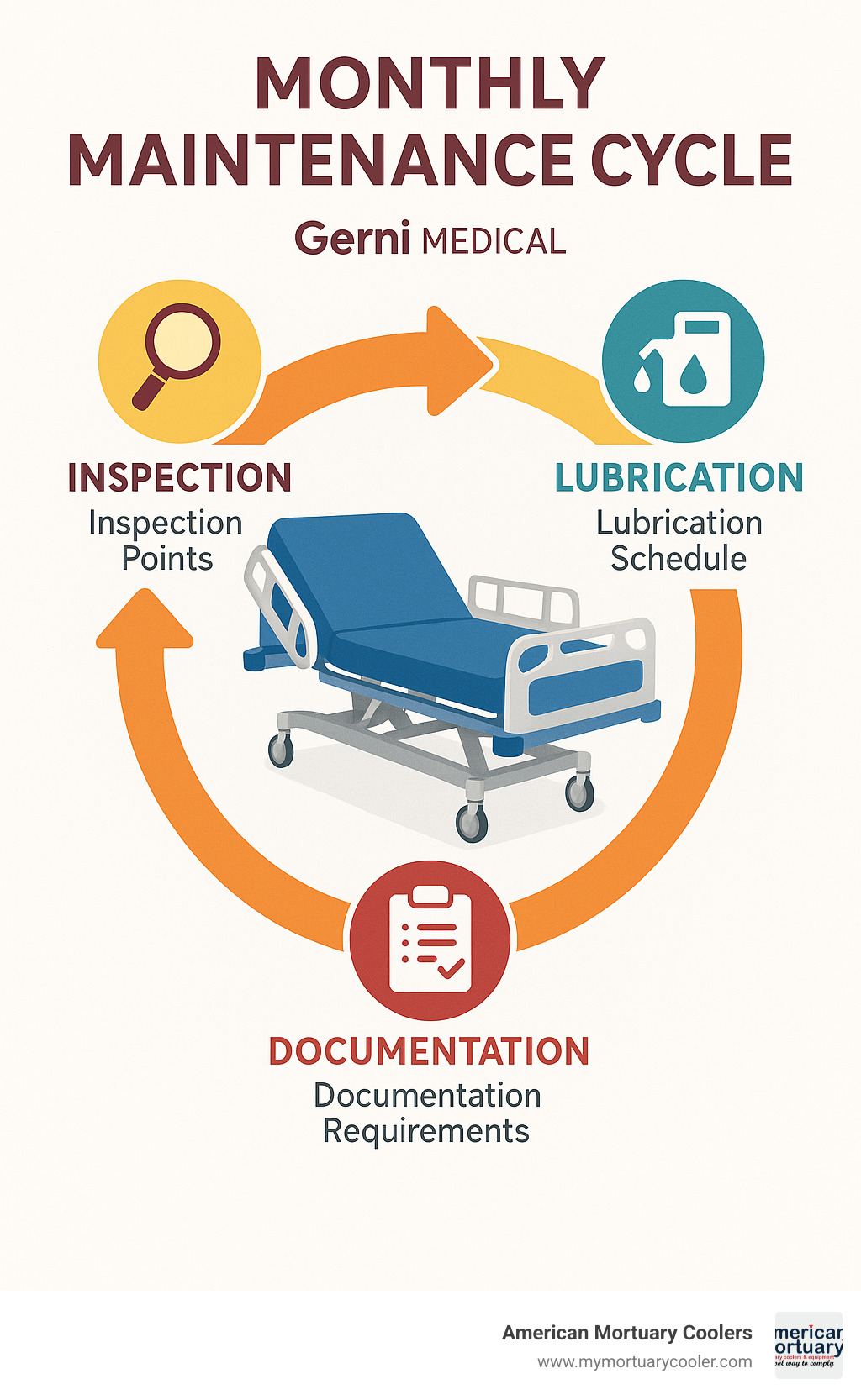
Regulatory Compliance
Stay on the right side of regulations by maintaining proper documentation. Ensure you're meeting FDA Medical Device Reporting requirements by documenting and reporting any incidents involving patient injury. For applicable facilities, maintain compliance with 93/42/EEC Class 1 Medical Device standards.
OSHA guidelines for safe patient handling must be followed not just for patient safety but staff protection as well. Keep comprehensive records of all inspections and services—these aren't just bureaucratic hoops but essential protection in case of incidents or regulatory inspections.
Following manufacturer maintenance requirements isn't optional if you want to maintain warranty coverage. Many facilities find too late that skipped maintenance voided their warranty when a major component fails.
At American Mortuary Coolers, we understand the importance of proper equipment maintenance. While our focus is primarily on mortuary equipment, many of the same principles apply across all medical transport devices. Proper care of your gerni bed ensures it will be ready when you need it most—because in healthcare, equipment reliability isn't just about cost savings, it's about being there for patients when every second counts.
Frequently Asked Questions about Gerni Beds
What weight capacities are standard for a Gerni Bed?
When shopping for a gerni bed, weight capacity is one of the most crucial specifications to consider. Most standard models comfortably support between 330-550 pounds, which works well for the majority of adult patients. If your facility regularly serves larger individuals, you'll want to look at bariatric models, which offer impressive capacities ranging from 600 pounds all the way up to 1,000+ pounds.
Weight capacity isn't just about your patient's size. That rating needs to include everything being transported along with them – IV pumps, monitoring equipment, oxygen tanks, and any other necessary devices. Smart facility managers always choose models that exceed their typical requirements to ensure both safety and longevity.
"I always tell healthcare administrators that weight capacity affects more than just patient safety," shares Maria, a healthcare ergonomics specialist I worked with recently. "When you consistently push equipment to its limits, you're accelerating wear on the hydraulic systems and structural components. Plus, your staff faces increased injury risk when maneuvering fully-loaded equipment."
When evaluating which gerni bed weight capacity makes sense for your facility, consider your typical patient demographics, what equipment usually travels with patients, how much safety margin you need for unexpected situations, and whether higher-capacity units might be too heavy for your staff to maneuver comfortably.
How does a Gerni Bed improve patient safety during transport?
The journey through busy hospital corridors can be risky business, but a thoughtfully designed gerni bed dramatically improves patient safety during these necessary trips.
Side rails serve as the first line of defense against falls while giving patients something solid to hold onto during movement. Today's modern designs have eliminated those dangerous gaps and pinch points that plagued older models. The secure braking systems on quality gurneys prevent any unexpected rolling during patient transfers, with premium models even featuring automatic braking when left unattended.
"We saw a remarkable 45% drop in transport-related incident reports after upgrading to gurneys with improved side rail systems and more intuitive controls," a patient safety officer told me at a recent healthcare conference. "That investment paid for itself within the first year just by reducing our liability exposure."
Beyond these basics, a well-designed gerni bed features a stable base with a low center of gravity to prevent tipping on ramps or thresholds. Adjustable restraint straps secure patients without restricting comfort, while Trendelenburg positioning capability allows immediate response to medical emergencies that might occur during transport.
The thoughtful details make a difference too – shock-absorbing systems minimize jarring over thresholds, corner bumpers protect both patients and walls during tight navigations, and standardized control mechanisms reduce operator error. All these features work together to create a comprehensive safety system that protects vulnerable patients during necessary movements.
Can one person safely operate a modern Gerni Bed?
Yes, most modern gerni beds are engineered for single-operator use, though many institutions still require two staff members as a safety precaution. Today's designs include several features that make solo operation both safer and easier than with older models.
The best gerni beds feature balanced weight distribution so they steer neutrally from either end, along with ergonomically positioned push handles that reduce back strain. Many premium models include a fifth wheel for improved straight-line tracking down long corridors, and some even offer power drive systems that help move heavy loads with minimal physical effort.
"The MOBI F500™ mortuary stretcher is a perfect example of thoughtful single-operator design," James, a funeral director I supplied equipment to last year, told me. "Even with a 500-pound load, the balanced frame and multi-position handles let my staff work safely alone when necessary."
While one person can technically operate most modern gerni beds, your staffing approach should consider several factors: the patient's condition and cooperation level, your staff's physical capabilities and training, your facility's layout (especially ramps and tight corners), and your institutional policies regarding patient transport.
As one clinical operations director wisely noted, "Having a second person isn't always about the physical demands. That extra staff member serves as another set of eyes watching for safety issues and helps reassure anxious patients during transport."
At American Mortuary Coolers, we understand the importance of equipment that works with your staffing realities. We're always happy to discuss how our transport solutions can meet your specific operational needs while maintaining the highest safety standards.
Conclusion
Finding the perfect gerni bed for your facility isn't just about checking boxes on a spec sheet—it's about finding a reliable partner in patient care that meets your unique needs. Throughout this guide, we've explored everything from basic features to advanced technology options, all designed to help you make a choice you won't regret.
At American Mortuary Coolers, we've seen how the right transport equipment transforms daily operations. Our customers tell us repeatedly that investing in quality up front saves countless headaches down the road. Whether you're outfitting an emergency department where every second counts, a funeral home where dignity is paramount, or a long-term care facility focused on patient comfort, the right gerni bed makes all the difference.
What makes a truly great transport solution isn't just sturdy construction (though that certainly matters!)—it's thoughtful design that anticipates real-world challenges. The best gerni beds protect patients while making caregivers' jobs easier and safer. When staff members don't have to fight with equipment, they can focus their energy where it belongs: on the people in their care.
We're proud to offer customized solutions that fit your specific requirements, not one-size-fits-all products that force you to adapt your processes. Our dual expertise in both medical and mortuary transport gives us a unique perspective on durability, functionality, and dignified care that few other suppliers can match.
Located in Tennessee but serving facilities nationwide, we've built our reputation on reliable equipment and genuine personal service. From Johnson City to Los Angeles, Chicago to Dallas, our customers appreciate that we're just a phone call away when they need guidance. Our nationwide delivery network ensures that whether you're in a major metropolitan hospital or a small-town funeral home, you'll get the equipment you need without excessive delays or shipping complications.
When you're ready to explore options for your facility, our specialists are here to help steer the choices without the pressure. We believe in building relationships, not just processing transactions, because we know this equipment will serve you for years to come.


